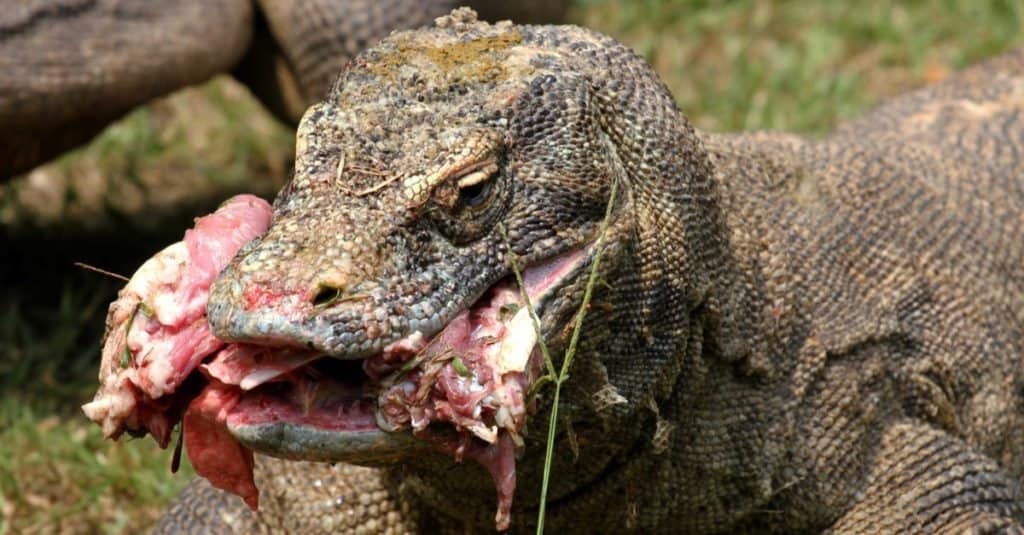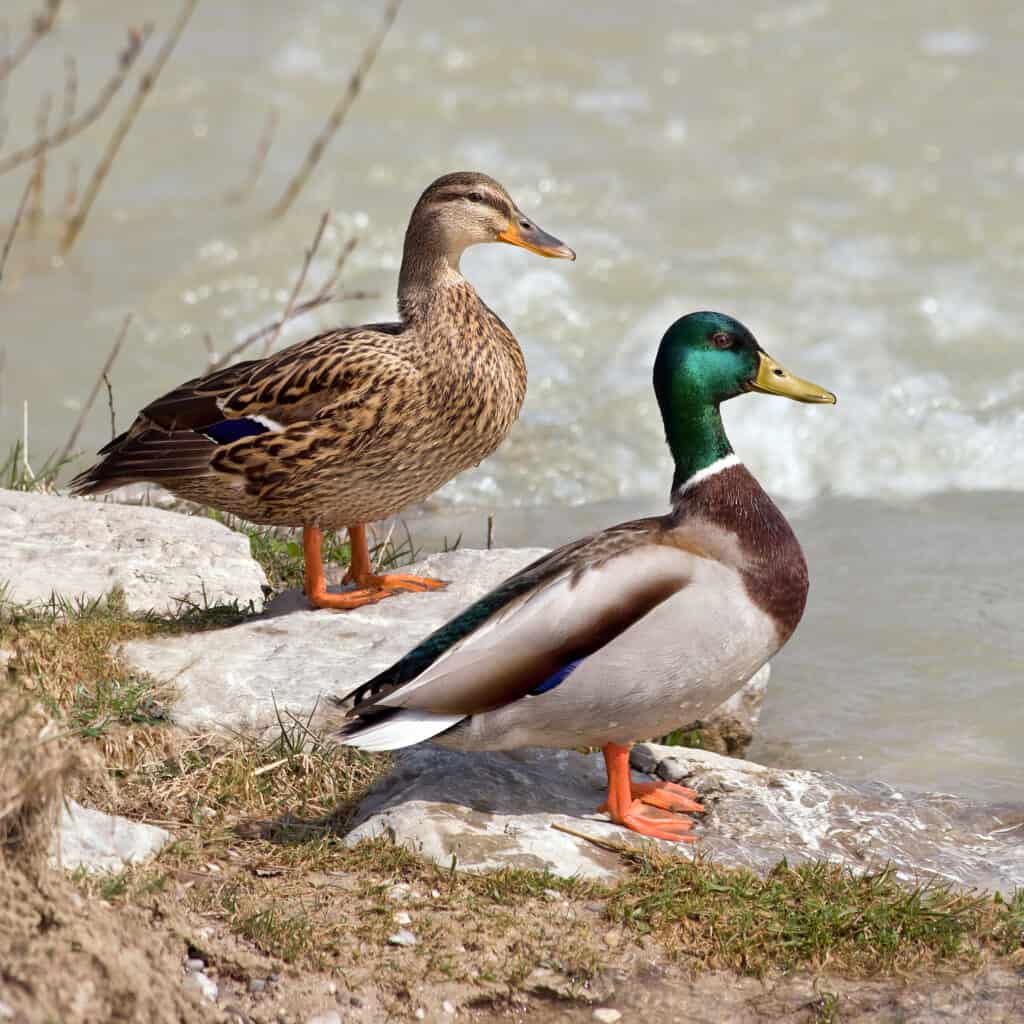Continue reading for our analysis...
The phrase ‘like a sitting duck’ comes to mind when watching this. In the below clip, we get to see a Komodo dragon approaching two ducks – the reptile is fast but the ducks actually have plenty of time to get away. For some reason, they leave it too late! The dragon approaches one of the ducks but it flaps its wings furiously and seems to be escaping.
Meanwhile, the second duck assumes that it is safe and stays close by – thanking its lucky stars that it was not the target of the reptile’s attention. What a mistake that turned out to be! The Komodo dragon switches its attention to the second duck and the rest is as gruesome as it is predictable.
What Do Komodo Dragons Normally Eat?
Komodo Dragons are large and carnivorous reptiles that live in the wild in southeast Indonesia only. They are termed opportunistic predators and will target a wide variety of prey which changes with the Komodo’s life stage. As hatchlings, they live almost exclusively on insects – mainly grasshoppers and beetles.
As they mature, they start to eat larger insects as well as birds and their eggs and small lizards. Soon, they extend their diet to include larger reptiles such as geckos, small snakes, and birds. At this stage, they will also target small mammals so their diet now includes rats and shrews.

Komodo dragons will eat a wide range of prey including snakes, carrion, and each other – they have no tastebuds!
©Yudi S/Shutterstock.com
As fully grown adults, they have the ability to successfully hunt much larger animals including those that are bigger than they are. Komodo dragons have been seen hunting wild boar and water buffalo as well as Sunda deer. They can now take on larger snakes and cannibalize smaller Komodos! If they live near human settlements, they will pinch livestock such as goats. They are also perfectly happy to feed on the carcasses of dead animals – they have no taste buds!
How Do Komodo Dragons Detect And Catch Prey?

Komodo dragons have snake-like tongues that allow them to detect odor chemicals in the air.
©Sergey Uryadnikov/Shutterstock.com
These formidable creatures have snake-like tongues that extend out of their mouths and move up and down. This allows them to detect odor chemicals in the air and drag them back to their vomeronasal organs to interpret them.
As we see here, they creep up and ambush their prey, grasping it by clamping their jaws quickly.
We also see here the thrashing motion that Komodos use to kill off their prey. The Komodo keeps thrashing until the prey stops moving. They have venom in their saliva so they may also just wait for the prey to die!
Is it Normal Behavior for Komodo Dragons to Eat Ducks?

Ducks and other birds are common prey for Komodo dragons.
©This picture was realized by Richard Bartz by using a Canon EF 70-300mm f/4-5.6 IS USM Lens, CC BY-SA 2.5 <https://creativecommons.org/licenses/by-sa/2.5>, via Wikimedia Commons – Original / License
Komodo dragons have a diverse diet, consuming nearly any type of meat. They scavenge for carcasses or hunt animals of various sizes, from small rodents to large water buffalo. Young Komodo dragons primarily feed on small lizards, insects, snakes, and birds.
That would basically mean that it’s totally normal behavior for a Komodo dragon to eat ducks. In fact, the Komodo dragon’s lower jaws can open remarkably wide, thanks to movable joints like the intramandibular hinge.
Additionally, their stomachs are highly flexible, enabling an adult Komodo dragon to consume an astonishing 80% of its own body weight in a single meal.
Thank you for reading! Have some feedback for us? Contact the AZ Animals editorial team.







